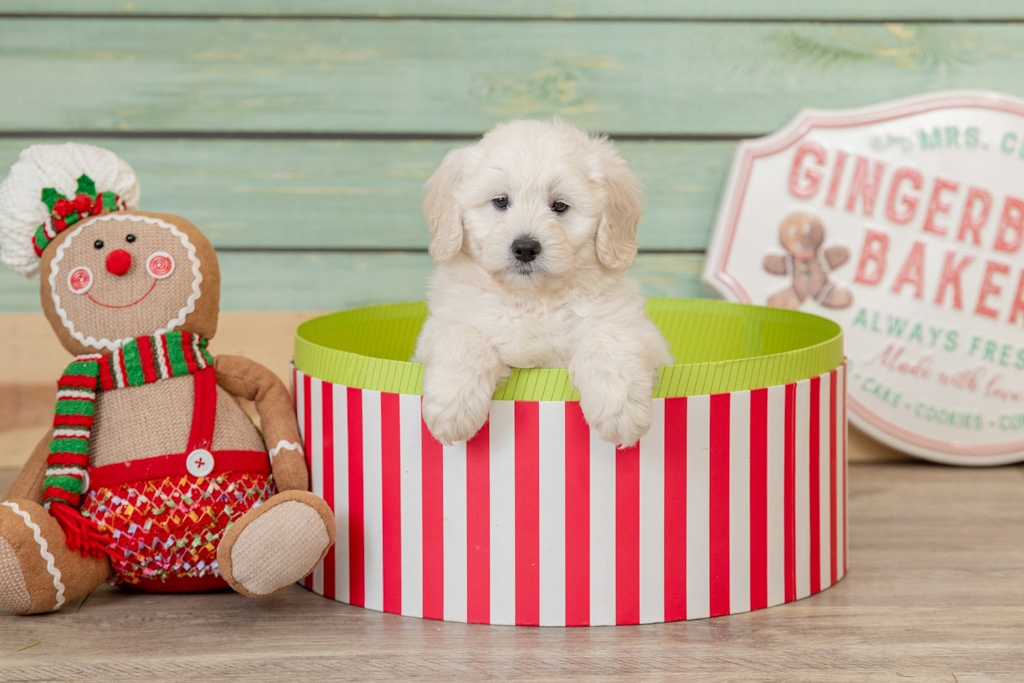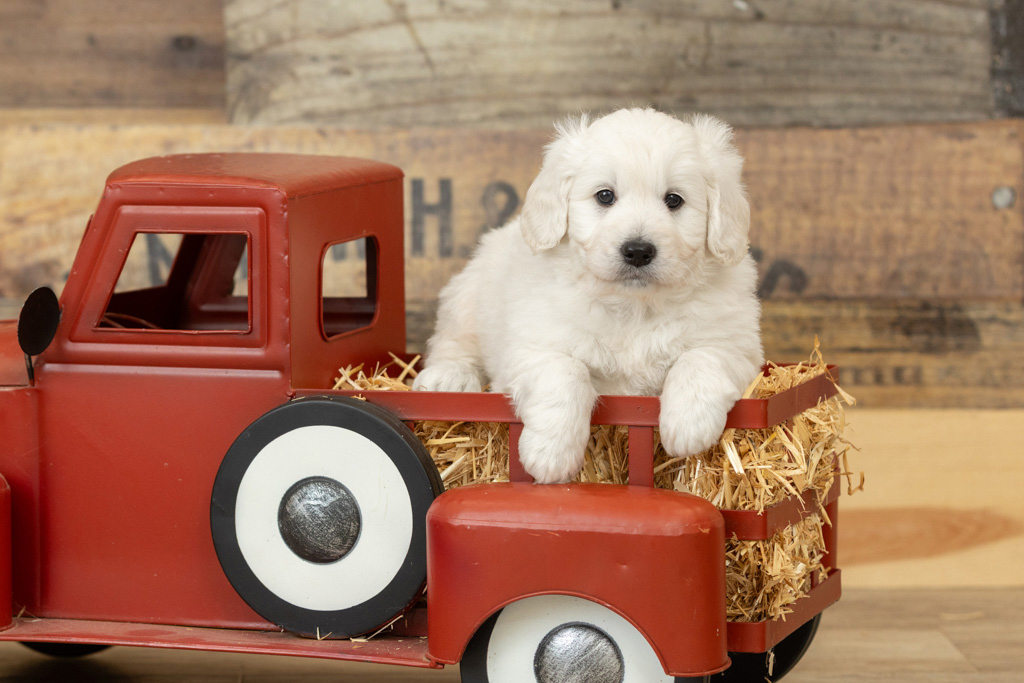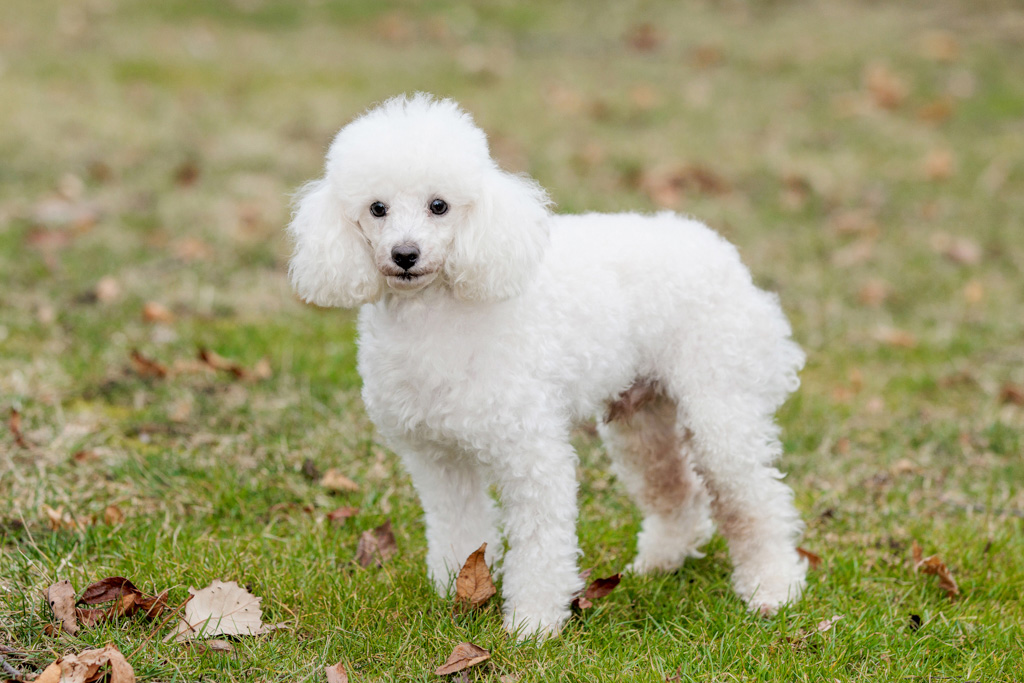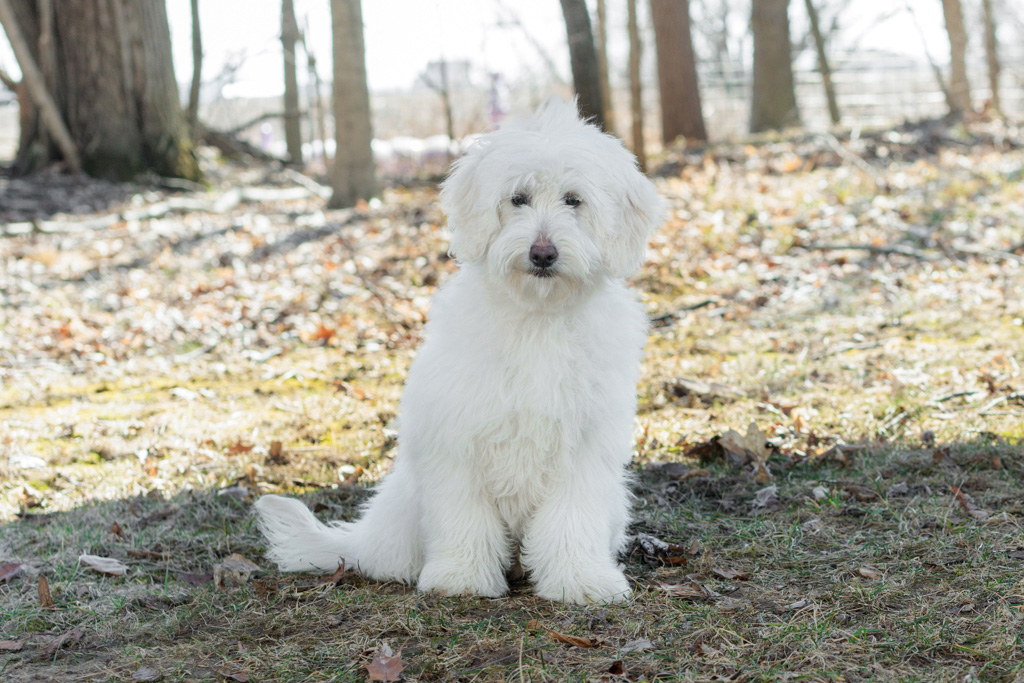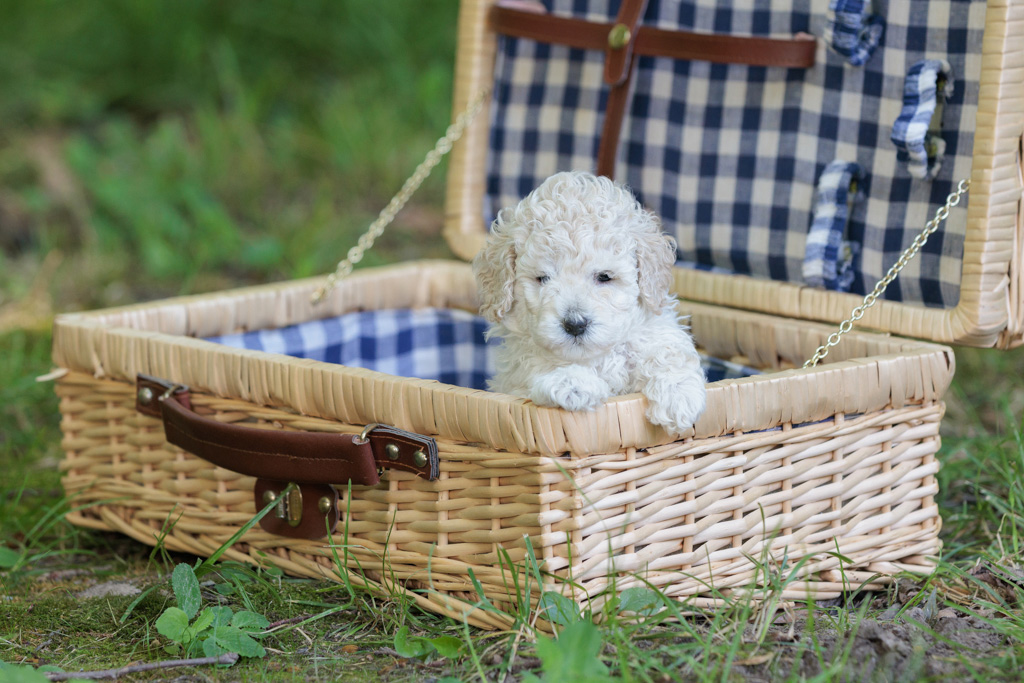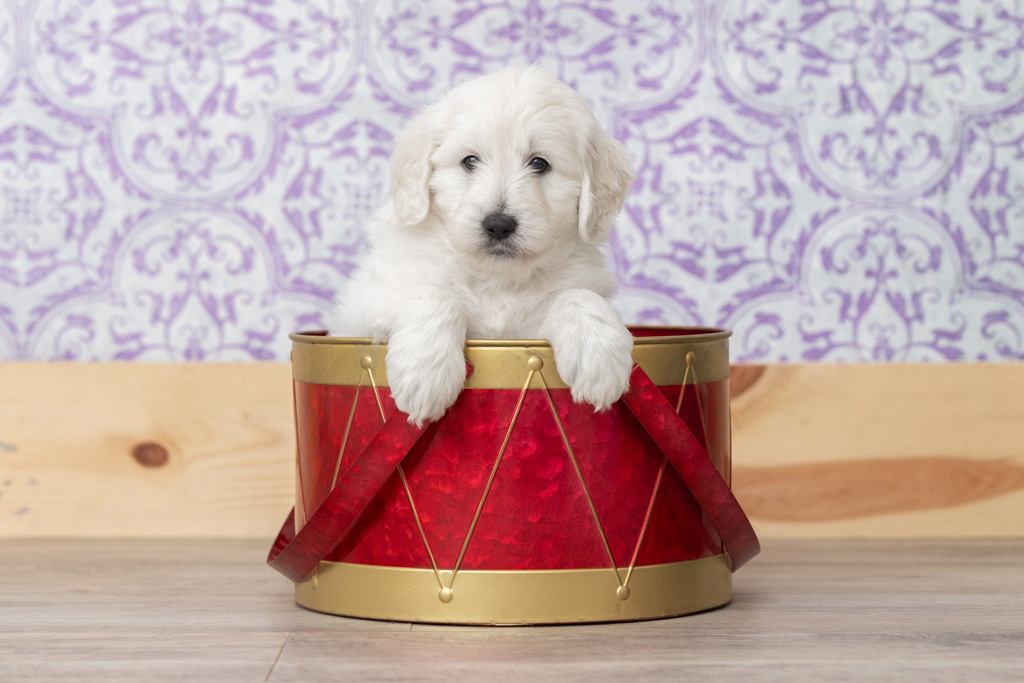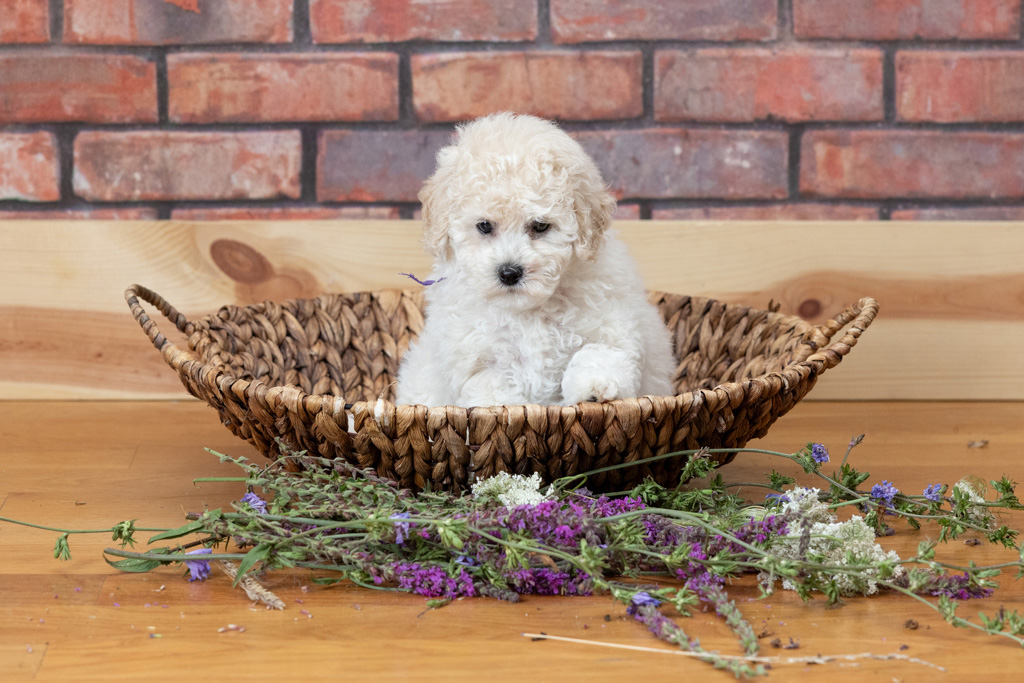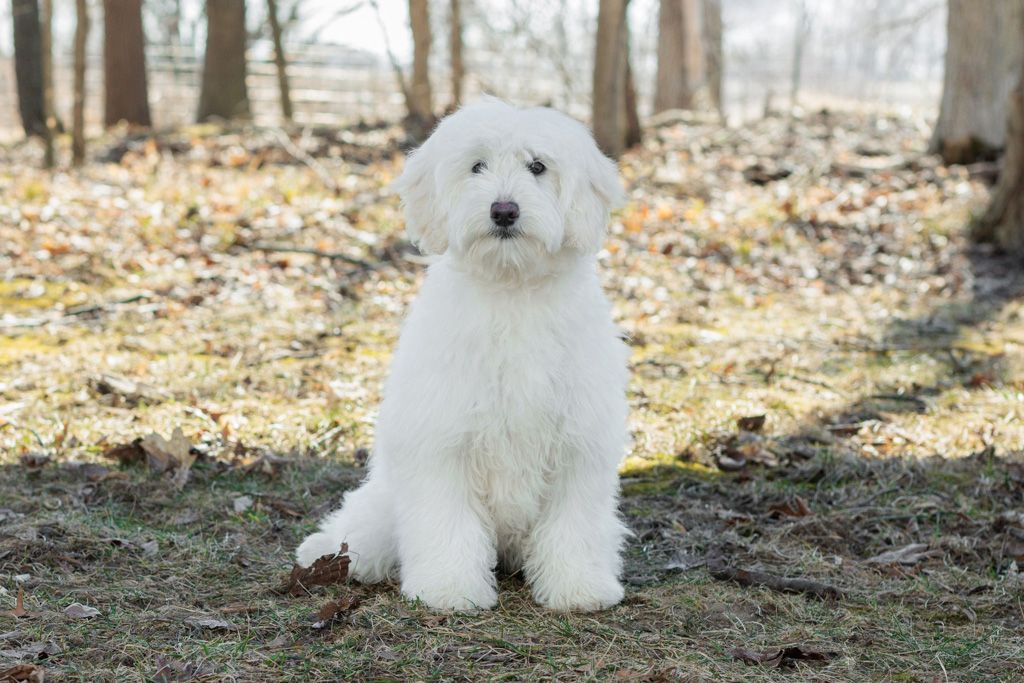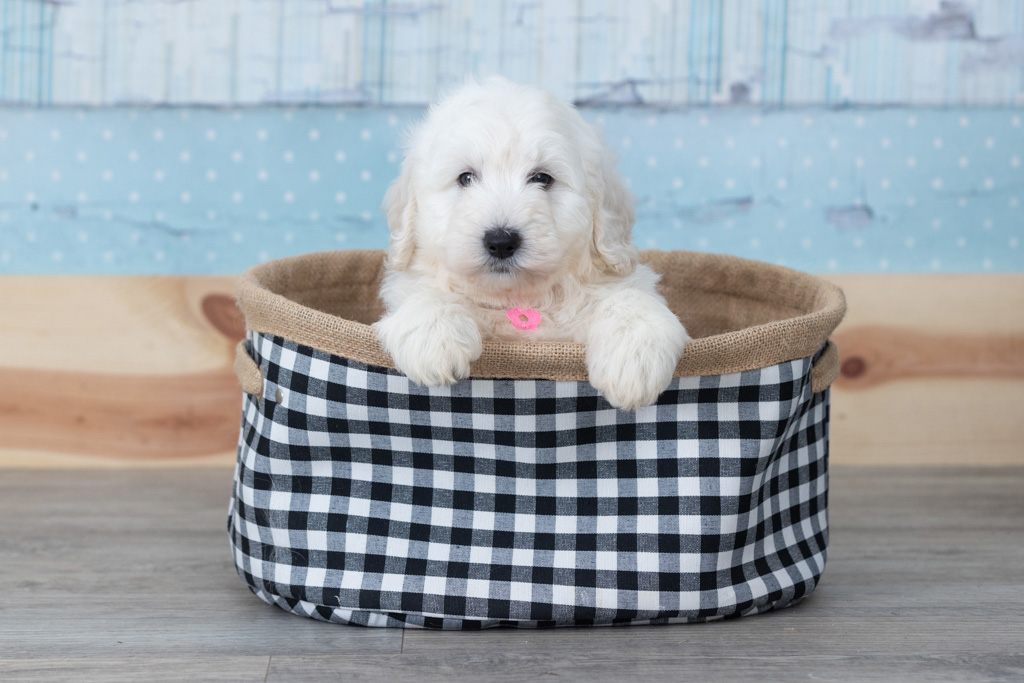Minidoodles are a mix of English Cream Golden Retrievers, known for their gentle and friendly nature, and Mini Poodles, celebrated for their intelligence and hypoallergenic coats. This unique combination makes Minidoodles not only beautiful but also highly adaptable and trainable, perfect for families of all sizes.
The English Cream Golden Retriever is renowned for its loving nature and calm demeanor, making it a family favorite across the globe. Meanwhile, Mini Poodles bring their sharp intellect and hypoallergenic qualities to the mix, making Minidoodles an attractive choice for those with allergies.
What Makes a Minidoodle Unique
The crossbreeding process aims to capture the best traits of both breeds, offering families a pet that is both aesthetically pleasing and functionally ideal.
This blend creates a dog with a balanced personality, combining the playful exuberance of a retriever with the keen intelligence of a poodle. As a result, Minidoodles are not just pets but beloved family members who thrive in a variety of environments.
Personality Traits of a Minidoodle
When it comes to personality, Minidoodles often inherit the best traits from both parent breeds. They are typically:
Affectionate and Loyal
Minidoodles love to be around their family and thrive on human interaction. They form strong bonds and are known to be very loyal companions. This loyalty is a trait that ensures they remain close to their family, always seeking to be involved in family activities.
Intelligent and Trainable
Thanks to their Poodle lineage, Minidoodles are quick learners and respond well to training. This makes them a great choice for families who enjoy teaching their dogs new tricks and commands. Their intelligence also means they require mental stimulation, which can be provided through interactive toys and training games.
Playful and Energetic
With their Golden Retriever genes, Minidoodles have an energetic side. They enjoy playtime and outdoor activities, making them ideal for active families. Their playful nature means they can be great companions for children, participating eagerly in games and adventures.
Are Minidoodles Good Family Dogs?
Minidoodles are versatile dogs that can adapt to various living situations, whether you live in an apartment or a house with a yard. They are generally good with children and can get along well with other pets when properly socialized. Their adaptable nature means they can thrive in both urban and rural settings, provided they receive adequate exercise and attention.
Socialization and Adaptability
Socialization is key to ensuring a Minidoodle grows into a well-adjusted adult. Introducing them to different environments, people, and animals from a young age will help them develop confidence and sociability. This adaptability extends to their living arrangements, as they can comfortably fit into families with diverse lifestyles and schedules.
Exercise Needs of a Minidoodle
Minidoodles require regular exercise to keep them happy and healthy. Daily walks, play sessions, and mental stimulation activities are essential.
Their playful nature means they love games like fetch, which not only exercise their bodies but also engage their minds. Incorporating a variety of activities, such as agility courses or obedience training, can provide both physical and mental exercise, keeping them engaged and satisfied.
A lack of exercise can lead to behavioral issues, as Minidoodles may become bored and restless. It’s important to tailor their exercise routine to their energy levels, ensuring they receive enough activity to expend their energy positively.
Whether it’s a hike in the woods or a game of tug-of-war in the backyard, keeping your Minidoodle active is crucial for their well-being.
Grooming Requirements
One of the appealing traits of Minidoodles is their low-shedding coat, thanks to their Poodle ancestry. However, regular grooming is still necessary to keep their coats in good condition. Routine brushing will prevent matting and keep their fur looking its best.
Additionally, regular visits to a professional groomer will help maintain their coat’s health and appearance.
Grooming is not just about aesthetics; it’s essential for their overall health.
Regular brushing helps distribute natural oils throughout their coat, promoting a healthy shine. It’s also an opportunity to check for any skin issues or parasites. Minidoodles may require occasional trims to keep their coats manageable, especially around the eyes and paws, where hair can grow long and obstruct their vision or comfort.
Health Considerations
Like all breeds, Minidoodles can be prone to certain health issues. Regular veterinary check-ups and a balanced diet are crucial to ensure their well-being.
Being proactive about their health will help you catch any potential issues early and keep your Minidoodle in top condition. Common health concerns may include hip dysplasia, allergies, and dental issues, all of which can be managed with proper care and attention.
A balanced diet tailored to their size and activity level is vital for maintaining their health. High-quality dog food, supplemented with appropriate nutrients, will support their growth and development.
Regular check-ups with a veterinarian will help monitor their health, address any concerns, and keep them up to date with vaccinations and preventative treatments.
Training Your Minidoodle
Training a Minidoodle can be a rewarding experience due to their intelligence and eagerness to please. Here are some basic tips to get you started:
Consistency is Key
Use consistent commands and signals when training your Minidoodle. This helps them understand what is expected of them and accelerates the learning process. Repetition and routine are crucial, as they reinforce learning and help your dog understand the desired behavior.
Positive Reinforcement
Reward-based training methods work best with Minidoodles. Praise and treats for good behavior encourage them to repeat those actions. This positive approach builds trust and strengthens the bond between you and your dog, making training sessions enjoyable for both parties.
Socialization
Expose your Minidoodle to different environments, people, and other animals early on. This helps them become well-rounded and confident adults. Socialization should be a gradual process, allowing them to explore new experiences at their own pace, ensuring they remain comfortable and stress-free.
Advanced Training Opportunities
Minidoodles excel in advanced training due to their intelligence. Consider exploring activities such as agility training, obedience competitions, or therapy dog certification.
These activities provide mental stimulation and strengthen the bond between you and your dog. Agility training can be particularly rewarding, as it challenges both their physical and mental faculties, fostering teamwork and communication.
Obedience competitions allow Minidoodles to showcase their skills and discipline, while therapy dog certification opens doors for them to bring joy to others in need.
Engaging in advanced training not only enhances their abilities but also deepens your relationship, creating a fulfilling experience for both of you.
Why Minidoodles Make Great Family Dogs
Minidoodles make wonderful family pets due to their friendly disposition and adaptability. They are gentle with young children and also make excellent companions for older adults. Their loving nature ensures that they fit seamlessly into family life.
Whether it’s playing with kids in the backyard or offering companionship to seniors, Minidoodles adapt to the needs of all family members.
Their gentle temperament makes them ideal for families with young children, as they are patient and tolerant. For older adults, they provide companionship and encourage an active lifestyle, promoting overall well-being and happiness.
A Good Match for Every Lifestyle
While Minidoodles enjoy playtime and outdoor activities, they are also content to relax with their family. This balance makes them suitable for families with varying activity levels.
Whether you’re hiking through the woods or lounging on the couch, your Minidoodle will be happy to join. Their ability to match the energy of their family members means they can seamlessly integrate into any routine.
This adaptability ensures they are equally comfortable in a bustling household or a quieter environment. Their presence can bring joy and companionship, enriching family life and creating lasting memories.
Final Thoughts: Is a Minidoodle the Right Fit for You?
At Royal Minidoodles, we take pride in helping our puppies find their forever homes. It’s important to consider whether you can commit to providing the love, care, and attention a Minidoodle needs throughout its life.
If you can, you’ll find a loyal friend and joyful companion in a Minidoodle. Providing a stable and nurturing environment is essential for their happiness and development.
Consider your lifestyle and how a Minidoodle will fit into it, ensuring you can meet their needs for exercise, grooming, and companionship. If you are ready for the commitment, a Minidoodle can bring endless joy and love to your family, creating a bond that lasts a lifetime.
Choosing a Minidoodle means welcoming a loving and intelligent companion into your home. Their adaptable nature, combined with their affectionate personality, makes them a great choice for many families.
By understanding their needs and characteristics, you can ensure that a Minidoodle is the perfect fit for your family. At Royal Minidoodles, we are dedicated to helping you find the right puppy to join your family, and we look forward to guiding you on this exciting journey.
The journey of welcoming a Minidoodle into your home is one filled with joy and companionship. Their unique blend of traits from two beloved breeds offers a pet that is both lovable and highly adaptable.
As you embark on this journey, know that your Minidoodle will enrich your life in countless ways, providing love, loyalty, and endless fun. With the right care and commitment, a Minidoodle can become an integral part of your family, bringing happiness for years to come.
